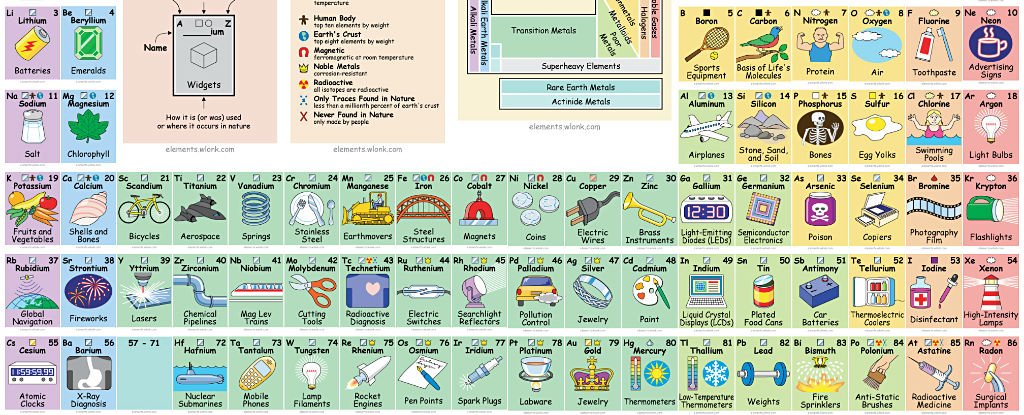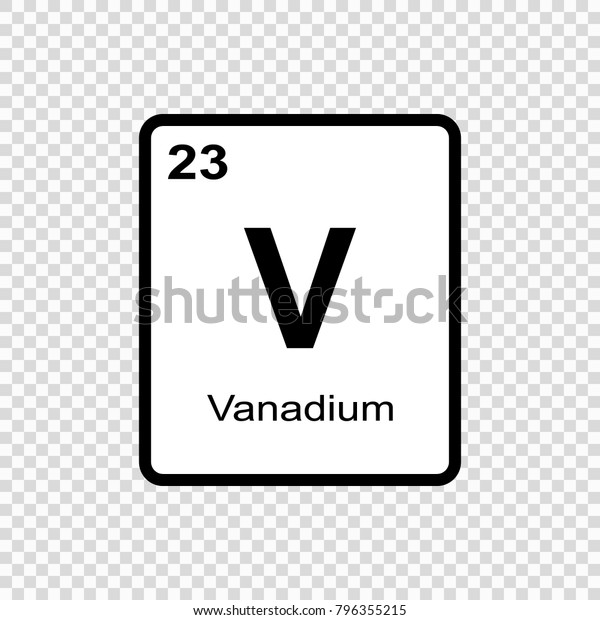Atomic Number – Protons, Electrons and Neutrons in Vanadium. Vanadium is a chemical element with atomic number 23 which means there are 23 protons in its nucleus.Total number of protons in the nucleus is called the atomic number of the atom and is given the symbol Z.
- 23: Vanadium - Vanadium V Group: 5. Atomic number: 23. Atomic mass: 50.9415. Configuration: Ar 3d 3 4s 2. Atomic radius: 171 pm. Covalent radius: 153 pm. Electron affinity: 50.6 eV.
- VANADIUM (V) #'V'# is atomic number #23#, so its configuration is #1s^2 2s^2 2p^6 3s^2 3p^6 3d^3 4s^2#. In shorthand it is #Ar 3d^3 4s^2#. This is an expected configuration; not an oddball element. Since the #4s# orbital is higher in energy, its electrons will be removed first.
Element Vanadium - V
Comprehensive data on the chemical element Vanadium is provided on this page; including scores of properties, element names in many languages, most known nuclides of Vanadium. Common chemical compounds are also provided for many elements. In addition technical terms are linked to their definitions and the menu contains links to related articles that are a great aid in one's studies.
Vanadium Menu
- Vanadium Page One
- Vanadium Page Two
- Vanadium Page Three
Overview of Vanadium
- Atomic Number: 23
- Group: 5
- Period: 4
- Series: Transition Metals
Vanadium's Name in Other Languages
- Latin: Vanadium
- Czech: Vanad
- Croatian: Vanadij
- French: Vanadium
- German: Vanadin - r
- Italian: Vanadio
- Norwegian: Vanadium
- Portuguese: Vanádio
- Russian: Ванадий
- Spanish: Vanadio
- Swedish: Vanadin
Atomic Structure of Vanadium
- Atomic Radius: 1.92Å
- Atomic Volume: 8.78cm3/mol
- Covalent Radius: 1.22Å
- Cross Section (Thermal Neutron Capture) σa/barns: 5.08
- Crystal Structure: Cubic body centered
- Electron Configuration:
- 1s2 2s2p6 3s2p6d3 4s2
- Electrons per Energy Level: 2,8,11,2
- Shell Model
- Shell Model
- Ionic Radius: 0.59Å
- Filling Orbital: 3d3
- Number of Electrons (with no charge): 23
- Number of Neutrons (most common/stable nuclide): 28
- Number of Protons: 23
- Oxidation States:5,3
- Valence Electrons: 3d3 4s2
- Electron Dot Model
- Electron Dot Model
Chemical Properties of Vanadium
- Electrochemical Equivalent: 0.38013g/amp-hr
- Electron Work Function: 4.3eV
- Electronegativity: 1.63 (Pauling); 1.85 (Allrod Rochow)
- Heat of Fusion: 20.9kJ/mol
- Incompatibilities:
- Strong oxidizers, ammonium nitrate
- Ionization Potential
- First: 6.74
- Second: 14.65
- Third: 29.31
- Valence Electron Potential (-eV): 120

Physical Properties of Vanadium


- Atomic Mass Average: 50.9415
- Boiling Point: 3682K 3409°C 6168°F
- Coefficient of lineal thermal expansion/K-1: 8.3E-6
- Conductivity
- Electrical: 0.0489 106/cm Ω
Thermal: 0.307 W/cmK
- Electrical: 0.0489 106/cm Ω
- Density: 6.11g/cc @ 300K
- Description:
- Silvery-white metal.
- Elastic Modulus:
- Bulk: 158/GPa
- Rigidity: 46.7/GPa
- Youngs: 127.6/GPa
- Enthalpy of Atomization: 514.6 kJ/mole @ 25°C
- Enthalpy of Fusion: 17.57 kJ/mole
- Enthalpy of Vaporization: 458.6 kJ/mole
- Flammablity Class: Non-combustible solid (except as dust)
- Freezing Point:see melting point
- Hardness Scale
- Brinell: 628 MN m-2
- Mohs: 7
- Vickers: 628 MN m-2
- Heat of Vaporization: 0.452kJ/mol
- Melting Point: 2175K 1902°C 3456°F
- Molar Volume: 8.55 cm3/mole
- Optical Reflectivity: 61%
- Physical State (at 20°C & 1atm): Solid
- Specific Heat: 0.49J/gK
- Vapor Pressure = 3.06Pa@1902°C
Regulatory / Health
- CAS Number
- 7440-62-2
- OSHAPermissible Exposure Limit (PEL)
- No limits set by OSHA
- OSHA PEL Vacated 1989
- No limits set by OSHA
- NIOSHRecommended Exposure Limit (REL)
- No limits set by NIOSH
- Routes of Exposure: Inhalation; Ingestion; Skin and/or eye contact
- Target Organs: Skin, respiratory system
- Levels In Humans:
Note: this data represents naturally occuring levels of elements in the typical human, it DOES NOT represent recommended daily allowances.- Blood/mg dm-3: <0.0002
- Bone/p.p.m: 0.0035
- Liver/p.p.m: 0.006
- Muscle/p.p.m: 0.02
- Daily Dietary Intake: 0.04 mg
- Total Mass In Avg. 70kg human: 0.11 mg
- Discovery Year: 1801
- Name Origin:
- From Vanadis a Scandinavian goddess.
- Abundance of Vanadium:
- Earth's Crust/p.p.m.: 160
- Seawater/p.p.m.:
- Atlantic Suface: 0.0011
- Atlantic Deep: N/A
- Pacific Surface: 0.0016
- Pacific Deep: 0.0018
- Atmosphere/p.p.m.: N/A
- Sun (Relative to H=1E12): 10500
- Sources of Vanadium:
- Found in the minerals patronite (VS4), vanadinite [Pb5(VO4)3Cl], and carnotite [K2(UO2)2(VO4)2.3H2O]. Vanadium is usually produced as a by-product of refining other ores and from Venezuelan oils. Annual world wide production is around 7,000 tons.
- Uses of Vanadium:
- It is mixed with other metals to make very strong and durable alloys which are used in construction materials, tools, springs and jet engines. Vanadium pentoxide (V2O5) is used as a catalyst, dye and color-fixer.
- Additional Notes:
- Many sources credit Nils Sefström with discovering vanadium in 1831, however, this is more of a rediscovery as it had already been discovered in A.M. del Rio in 1801.
Vanadium Menu
- Vanadium Page One
- Vanadium Page Two
- Vanadium Page Three
References
A list of reference sources used to compile the data provided on our periodic table of elements can be found on the main periodic table page.
Related Resources
Vanadium Atomic Model
- Anatomy of the Atom
Answers many questions regarding the structure of atoms. - Molarity, Molality and Normality
Introduces stoichiometry and explains the differences between molarity, molality and normality. - Molar Mass Calculations and Javascript Calculator
Molar mass calculations are explained and there is a JavaScript calculator to aid calculations. - Chemical Database
This database focuses on the most common chemical compounds used in the home and industry.
Citing this page
If you need to cite this page, you can copy this text:
Molybdenum Atomic Number And Mass
Kenneth Barbalace. Periodic Table of Elements - Vanadium - V. EnvironmentalChemistry.com. 1995 - 2021. Accessed on-line: 4/24/2021
https://EnvironmentalChemistry.com/yogi/periodic/V.html
.
Linking to this page
If you would like to link to this page from your website, blog, etc., copy and paste this link code (in red) and modify it to suit your needs:
Chrome 75. <a href='https://EnvironmentalChemistry.com/yogi/periodic/V.html'>echo Periodic Table of Elements: Vanadium - V (EnvironmentalChemistry.com)</a>- Comprehensive information for the element Vanadium - V is provided by this page including scores of properties, element names in many languages, most known nuclides and technical terms are linked to their definitions.
.
NOTICE: While linking to articles is encouraged, OUR ARTICLES MAY NOT BE COPIED TO OR REPUBLISHED ON ANOTHER WEBSITE UNDER ANY CIRCUMSTANCES.
PLEASE, if you like an article we published simply link to it on our website do not republish it.
